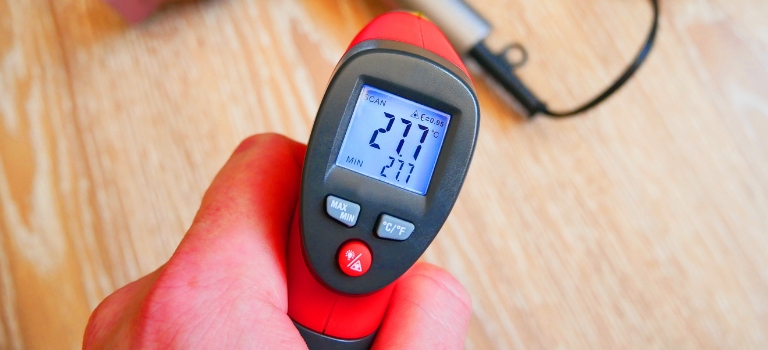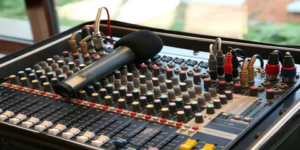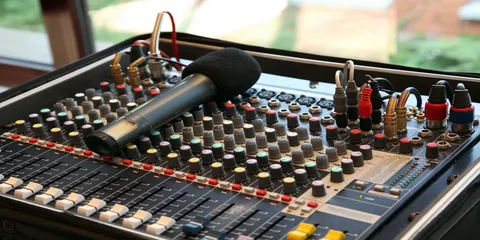Introduction
Temperature measurement is a fundamental aspect of countless industries, from ensuring product quality in manufacturing to maintaining comfortable indoor climates in our homes. To achieve accurate temperature data, various types of temperature sensors are employed. In this comprehensive guide, we will delve into these sensors, explaining their operation, advantages, applications, and how to choose the right one for your specific needs. By the end of this extensive exploration, you’ll be well-versed in the world of temperature sensors.
Understanding Temperature Measurement
Before diving into the details of different temperature sensors, let’s take a moment to understand the significance of temperature measurement. Temperature data is vital in various fields, such as healthcare, automotive, and food production. Accurate temperature measurement enables precise control of processes, ensures safety, and enhances product quality.
Common Types of Temperature Sensors
- Thermocouples: Thermocouples, often regarded as the workhorses of temperature measurement, are among the most widely used temperature sensors. They operate on the principle of the thermoelectric effect, where two dissimilar metals generate a voltage proportional to the temperature difference between the junctions. Thermocouples are known for their ruggedness, wide temperature range, and suitability for various applications. They are classified into multiple types, such as Type K, J, and T, each with specific properties.
- Resistance Temperature Detectors (RTDs): RTDs are renowned for their high accuracy and reliability. They work by measuring the change in electrical resistance of a material, typically platinum, with temperature changes. Platinum RTDs are the most common, known for their linearity and stability. They are often used in scientific and industrial settings where precision is paramount.
- Thermistors: Thermistors are temperature-sensitive resistors that exhibit highly nonlinear resistance changes with temperature. This makes them ideal for precise measurements in specific temperature ranges. NTC (Negative Temperature Coefficient) thermistors have a resistance that decreases with increasing temperature, while PTC (Positive Temperature Coefficient) thermistors exhibit the opposite behavior. Thermistors are commonly found in medical devices, automotive applications, and consumer electronics.
- Infrared (IR) Temperature Sensors: Infrared temperature sensors are non-contact sensors that measure temperature by detecting the emission and absorption of infrared radiation from an object. These sensors can measure the temperature of an object without physical contact, making them suitable for applications where contact might be difficult, undesirable, or potentially hazardous. IR sensors find applications in numerous areas, including monitoring food temperature, detecting body heat in thermal imaging cameras, and measuring the temperature of machinery in industrial settings.
- Bimetallic Temperature Sensors: Bimetallic sensors are a simple yet effective solution for temperature measurement. They work on the principle of two bonded metals with different coefficients of thermal expansion. As temperature changes, the metals expand at different rates, causing the sensor to bend. This bending action is then converted into temperature readings. Bimetallic sensors are often used in thermostats, switches, and other devices where temperature control is essential.
- Fiber Optic Temperature Sensors: Fiber optic sensors are a unique breed in the world of temperature measurement. They operate on the principle that the refractive index of an optical fiber changes with temperature. This change is detected and used to measure temperature. Fiber optic sensors are particularly suitable for applications where electrical sensors might be hazardous, such as in explosive environments or where immunity to electromagnetic interference is required. These sensors are often found in critical applications such as aerospace and downhole drilling.
How Each Sensor Works
Let’s take a closer look at how each type of temperature sensor works:
- Thermocouples operate based on the thermoelectric effect. When two different metals are joined at one end (the hot junction) and connected to a voltmeter, a voltage is generated proportional to the temperature difference between the hot junction and the reference junction (usually at a known, constant temperature). The voltage can be converted into temperature readings using calibration curves specific to the thermocouple type.
- RTDs function by measuring changes in electrical resistance with temperature. The most common RTDs use platinum as the temperature-sensing element due to its high resistance, stability, and linearity. As temperature increases, the electrical resistance of the platinum wire also increases. RTDs are highly accurate and linear over a wide temperature range.
- Thermistors rely on the fact that their electrical resistance changes significantly with temperature. NTC thermistors exhibit a decrease in resistance as temperature rises, while PTC thermistors exhibit an increase in resistance with temperature. By measuring this change in resistance, thermistors provide precise temperature readings within their specified range.
- IR Sensors are non-contact sensors that measure temperature by detecting the emission and absorption of infrared radiation from an object. The sensor detects the infrared radiation, and the temperature is calculated based on the amount of radiation emitted. These sensors are highly versatile and find applications in various fields, from food safety to industrial process monitoring.
- Bimetallic Sensors function based on the varying expansion properties of two metals bonded together. As temperature changes, the two metals expand at different rates, causing the sensor to bend. This bending action indicates temperature changes and is commonly found in thermostats and switches.
- Fiber Optic Sensors are based on the principle that the refractive index of an optical fiber changes with temperature. These changes in the refractive index are detected and translated into temperature measurements. Fiber optic sensors are suitable for applications where electrical sensors may pose safety risks or immunity to electromagnetic interference is crucial.
Advantages and Disadvantages
To make informed decisions about which temperature sensor to use, it’s essential to understand the advantages and disadvantages of each type:
Thermocouples:
- Advantages:
- Wide temperature range (-200°C to 2300°C).
- Rugged and durable.
- Fast response time.
- Disadvantages:
- Moderate accuracy.
- NonlinearNon-linear output.
RTDs:
- Advantages:
- High accuracy.
- Linear and stable output.
- Wide temperature range (-200°C to 600°C).
- Disadvantages:
- Slower response time.
- More expensive compared to thermocouples.
Thermistors:
- Advantages:
- Very high accuracy within a limited temperature range.
- Fast response time.
- Compact and cost-effective.
- Disadvantages:
- NonlinearNon-linear response.
- Limited temperature range.
IR Sensors:
- Advantages:
- Non-contact measurement.
- Suitable for measuring moving or inaccessible objects.
- Quick response time.
- Disadvantages:
- Affected by the emissivity of the object.
- Limited range compared to thermocouples and RTDs.
Bimetallic Sensors:
- Advantages:
- Cost-effective.
- Simple and reliable design.
- Suitable for on/off control applications.
- Disadvantages:
- Limited temperature range.
- Lower accuracy compared to RTDs and thermocouples.
Fiber Optic Sensors:
- Advantages:
- Immune to electromagnetic interference.
- Suitable for harsh environments.
- High accuracy and stability.
- Disadvantages:
- Limited adoption in some industries.
- Relatively higher cost.
Applications
These sensors find applications across a broad spectrum of industries:
Industrial Manufacturing:
- Thermocouples are widely used to monitor temperatures in manufacturing processes, including heat treatment, metal smelting, and glass production.
HVAC Systems:
- RTDs help maintain comfortable indoor climates in heating, ventilation, and air conditioning systems, ensuring energy efficiency and occupant comfort.
Medical Devices:
- Thermistors are crucial in medical thermometers, ensuring accurate and reliable body temperature measurements for healthcare professionals and patients.
Food Industry:
- IR Sensors are essential for food safety and quality control. They are used to monitor and verify the temperature of food products during processing, storage, and transportation.
Automotive:
- Bimetallic Sensors are commonly found in automotive thermostats, helping to regulate engine temperature and ensure optimal performance and fuel efficiency.
Aerospace:
- Fiber Optic Sensors are used in critical aerospace applications where accuracy and safety are paramount. They are often employed to monitor temperature in aircraft engines and structural components.
Choosing the Right Sensor
Selecting a suitable temperature sensor for your specific application is a crucial decision. Here are some key considerations:
- Temperature Range: Consider the temperature range your application requires. Thermocouples offer the most comprehensive range, while RTDs are suitable for more moderate ranges.
- Accuracy: If precision is essential, consider RTDs or thermistors. RTDs are known for their high accuracy, while thermistors can provide precise measurements within their specified range.
- Response Time: Depending on your application, the response time of the sensor may be critical. For fast-changing temperatures, thermocouples are a good choice.
- Cost: Different sensors come with different price tags. Make sure to factor in your budget when selecting a sensor type.
- Environmental Conditions: Consider the conditions your sensor will be exposed to. For harsh environments with electromagnetic interference, fiber optic sensors might be the best option.
- Calibration: Think about the calibration requirements of the sensor. Some sensors may need more frequent calibration to maintain accuracy.
Calibration and Maintenance
To ensure accurate temperature measurements over time, regular calibration and maintenance of these sensors are essential. Calibration is verifying and adjusting the sensor’s readings to a known standard. It helps in correcting any inaccuracies that may have developed over time. The calibration interval depends on the sensor type, application, and industry standards.
Thermocouples: Calibration can be performed by comparing the thermocouple’s voltage output to a known standard. Specialized equipment is used for this purpose. Thermocouples generally require less frequent calibration compared to other sensors.
RTDs: Calibration of RTDs involves comparing their resistance at various temperatures to known standards. It typically requires precision equipment and is more common in laboratory and industrial settings.
Thermistors: Due to their non-linearity, thermistors require specific calibration procedures. Calibration curves are created to relate resistance to temperature.
IR Sensors: Infrared temperature sensors are typically calibrated using blackbody sources or other calibrated temperature references. Calibration is crucial for ensuring accuracy in applications where precise temperature measurement is essential.
Bimetallic Sensors: Calibration for bimetallic sensors is relatively simple, involving checks against known temperature references. They are often used in on/off control applications where minor calibration errors may not be critical.
Fiber Optic Sensors: Calibration for fiber optic sensors involves verifying their accuracy against known standards. Fiber optic sensors are often used in critical applications where precise temperature measurement is essential.
Maintenance of temperature sensors includes periodic checks for physical damage, contamination, and wear. Regular inspection and cleaning are essential to ensure reliable performance. For critical applications, it is advisable to establish a maintenance schedule that includes both calibration and physical inspection.
Emerging Trends
The field of temperature sensing technology is continually evolving, with new trends and advancements that impact various industries:
- Miniaturization: Temperature sensors are becoming smaller and more compact, allowing integration into smaller devices and applications.
- Wireless Connectivity: Sensors are increasingly equipped with wireless capabilities, making it easier to collect and transmit temperature data in real-time.
- Improved Accuracy: Sensor manufacturers are continually working on improving the accuracy of their sensors, making them more reliable for critical applications.
- IoT Integration: Integrating temperature sensors into the Internet of Things (IoT) is a growing trend. Temperature data is collected and analyzed for intelligent applications that enhance energy efficiency and safety.
- Energy Efficiency: Temperature sensors play a crucial role in energy conservation efforts. New sensor technologies contribute to more efficient heating and cooling systems in homes and buildings.
- Smart Agriculture: Temperature sensors are used in precision agriculture to monitor and control farm environmental conditions, leading to more efficient crop management and increased yields.
- Healthcare Applications: Temperature sensors are essential in healthcare, and advancements in sensor technology are improving the accuracy and reliability of medical devices.
Conclusion
In conclusion, understanding the different types of temperature sensors is crucial for making informed decisions in various industries. Whether you need rugged thermocouples for high-temperature industrial processes, highly accurate RTDs for laboratory measurements, or non-contact IR sensors for food safety, there’s a sensor type tailored to your specific needs. By considering the advantages, disadvantages, and applications of each sensor, you can make informed decisions and contribute to the success of your projects.
Temperature sensors are vital in monitoring, controlling, and optimizing processes, ensuring safety, and improving product quality. Their importance spans numerous industries, from manufacturing to healthcare, and their accuracy and reliability are paramount.









